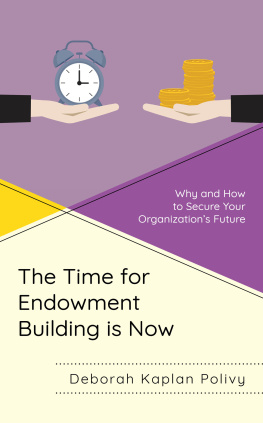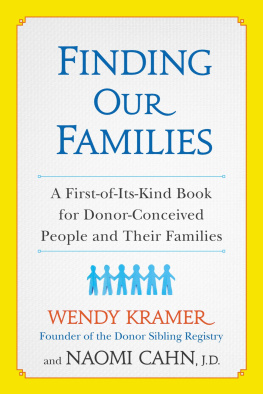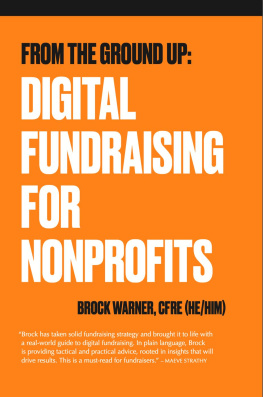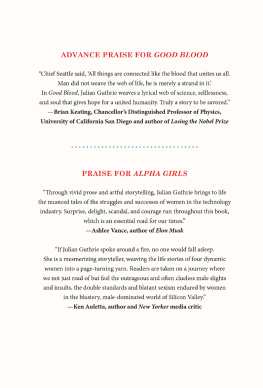Cover Design: Wiley
Cover Image: iStockphoto.com/Artush
Copyright 2014 by Deborah Kaplan Polivy. All rights reserved.
Published by John Wiley & Sons, Inc., Hoboken, New Jersey.
Published simultaneously in Canada.
No part of this publication may be reproduced, stored in a retrieval system, or transmitted in any form or by any means, electronic, mechanical, photocopying, recording, scanning, or otherwise, except as permitted under Section 107 or 108 of the 1976 United States Copyright Act, without either the prior written permission of the Publisher, or authorization through payment of the appropriate per-copy fee to the Copyright Clearance Center, Inc., 222 Rosewood Drive, Danvers, MA 01923, (978) 750-8400, fax (978) 646-8600, or on the Web at www.copyright.com . Requests to the Publisher for permission should be addressed to the Permissions Department, John Wiley & Sons, Inc., 111 River Street, Hoboken, NJ 07030, (201) 748-6011, fax (201) 748-6008, or online at http://www.wiley.com/go/permissions .
Limit of Liability/Disclaimer of Warranty: While the publisher and author have used their best efforts in preparing this book, they make no representations or warranties with respect to the accuracy or completeness of the contents of this book and specifically disclaim any implied warranties of merchantability or fitness for a particular purpose. No warranty may be created or extended by sales representatives or written sales materials. The advice and strategies contained herein may not be suitable for your situation. You should consult with a professional where appropriate. Neither the publisher nor author shall be liable for any loss of profit or any other commercial damages, including but not limited to special, incidental, consequential, or other damages.
For general information on our other products and services or for technical support, please contact our Customer Care Department within the United States at (800) 762-2974, outside the United States at (317) 572-3993 or fax (317) 572-4002.
Wiley publishes in a variety of print and electronic formats and by print-on-demand. Some material included with standard print versions of this book may not be included in e-books or in print-on-demand. If this book refers to media such as a CD or DVD that is not included in the version you purchased, you may download this material at http://booksupport.wiley.com . For more information about Wiley products, visit www.wiley.com .
Library of Congress Cataloging-in-Publication Data :
Polivy, Deborah Kaplan, 1947
Donor cultivation and the donor lifecycle map: a new framework for fundraising/Deborah Kaplan Polivy.
pages cm
Includes bibliographical references and index.
ISBN 978-1-118-60377-2 (cloth: alk. paper); ISBN 978-1-118-60376-5 (ebk); ISBN 978-1-118-60378-9 (ebk)
1. Fund raising. 2. Nonprofit organizationsManagement. I. Title.
HV41.2.P65 2014
658.15224dc23
2013024696
Foreword
I was both pleased and surprised to be asked to write a foreword for this very helpful and thoughtful book on donor cultivation. I personally began raising money for nonprofit organizations in 1984. With almost 30 years of experience and having been involved in raising hundreds of millions of dollars, I find it odd that I don't think of myself as a fundraiser or a development professional. Virtually every senior position I have had for over a quarter of a century had a fundraising component. So why don't I see myself as a fundraiser and how can this book help you identify more intimately with the work that you do?
The relationship we have with donors is complicated. It is both strange and wonderful. That is why I find the term relationship-based fundraising problematic. Relationships are relationship-based. If I try to develop a relationship with you only for the purpose of getting money from you, we don't have much of a relationship, particularly if I do so under the false pretense of friendship. Fundraising is not a goal in and of itself; it is a manifestation and expression of the support people give you because of your credibility and trust and because they care about the mission of the organization you represent.
In this respect fundraising, or even financial resource development, is a necessary but insufficient description of the work of any fundraiser of worth. I don't see myself as a fundraiser because that is only a piece of what I do, even if it is an important and significant aspect of my work. Money facilitates the fulfillment of a vision; it is not its own goal. That is why it is critical to understand the role of money in the work that we do as nonprofit change agents. That is why it is critical to invest in people for the totality of who they are. That is why it is critical to read this book.
People may deride the role of self-help books in forming relationships. Why does anyone need a manual on how to have a good marriage, for example, when the ingredients of good marriage should come naturally between good people? It's a fair question, but it also has an uncomfortable answer. We read guides because although the do's and don'ts of any relationship should be obvious to us, they aren't. We are often in need of outside counsel and advice, particularly from those who have been successful in the trenches. If raising money required obvious skills, we'd all be a lot better at it than we are.
I found the following pages both comprehensive and an excellent framework for beginning a deeper conversation about the art and science of raising money. This volume is the first attempt that I have seen to describe the use of specific tools that should help in building genuine and meaningful relationships with donors as donors, regardless of the level or potential for giving you begin with. I have always been inspired by the Jewish tradition that tells us that someone who solicits charity has a greater share of divine reward than the one who merely gives charity. The solicitor doubles the contribution through his or her sacred work. Effective fundraisers understand that raising money to match our passions and even out the playing field of social justice is holy work and is a privilege.
Few people regard fundraising as a privilege. It's time to change that.
Dr. Misha Galperin
President and CEO
Jewish Agency for Israel
Preface
There are many different types of fundraising offices in many different types of organizations all over the world. There are those, as Dr. Polivy describes in her introduction, with names of donors on Rolodex cards somewhere in a back office. And on the other end of the spectrum are organizations with large and sophisticated philanthropy departments with full-time staff responsible for the proper and continued engagement of each different type of donor. This book is written for the leaders of both.
In these pages, the development director of a small team or even a one-person office will read a number of anecdotes presented in sidebars from Dr. Polivy's professional experience that will help answer some of the fundamental questions not only about how to get started in fundraising, but also about the building blocks essential to a long-term, sustainable donor base. And the answers you, the reader with a small development program, will find in this book are not difficult to implement. You won't need massive startup funds or tools or even a staff to put into practice the framework that is presented. You will need a passion for the mission that you serve and a genuine desire to engage your fellow citizens in helping to realize the future that your organization envisions.
For fundraising leadership at larger programs, this book issues a challenge to remember what donor engagement really means. Like many other fundraising thinkers, Dr. Polivy begins with the premise that a charitable relationship between donor, service provider, and beneficiary is a complicated and very human oneever changing and evolvingbetween people. While our daily professional lives may seem to be focused around getting enough money in the door, thinking more about how we can increase opportunities to involve donors in our mission and work will ultimately lead to a more effective result.






